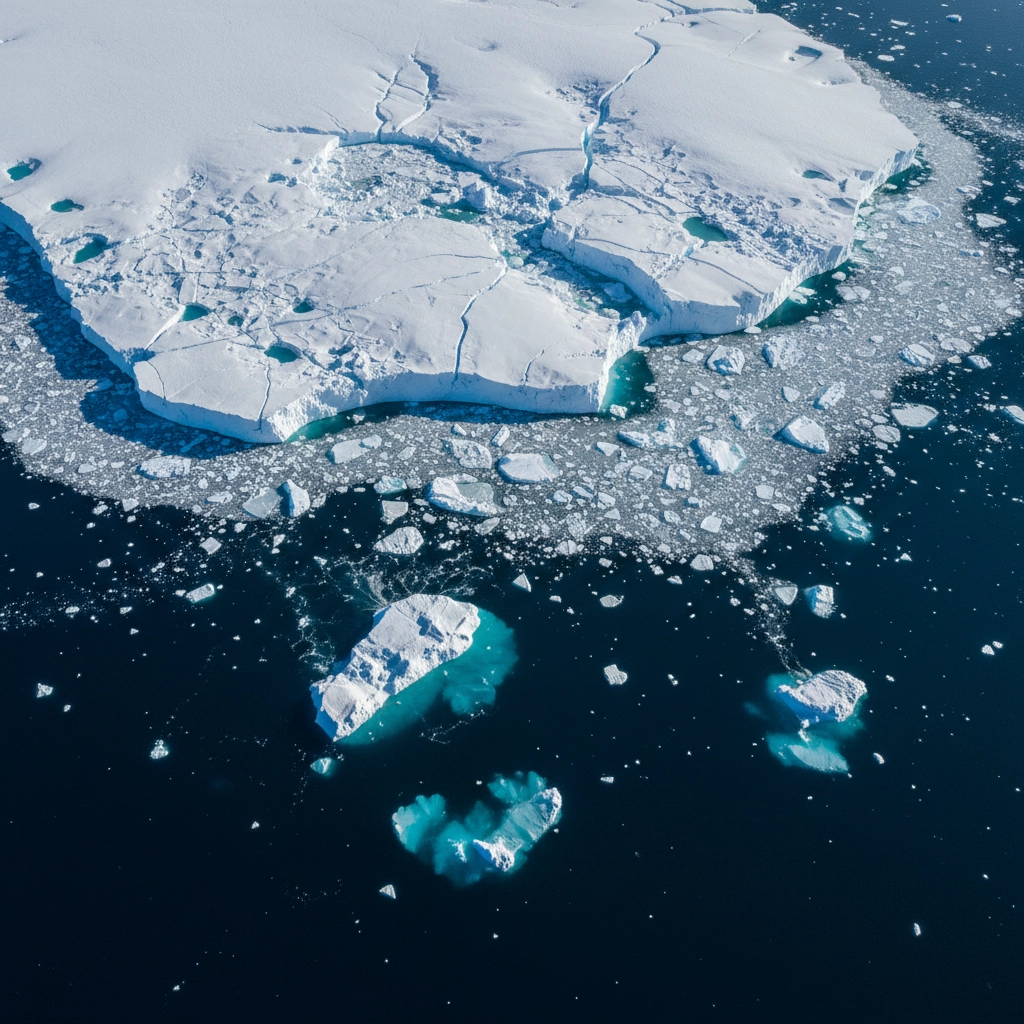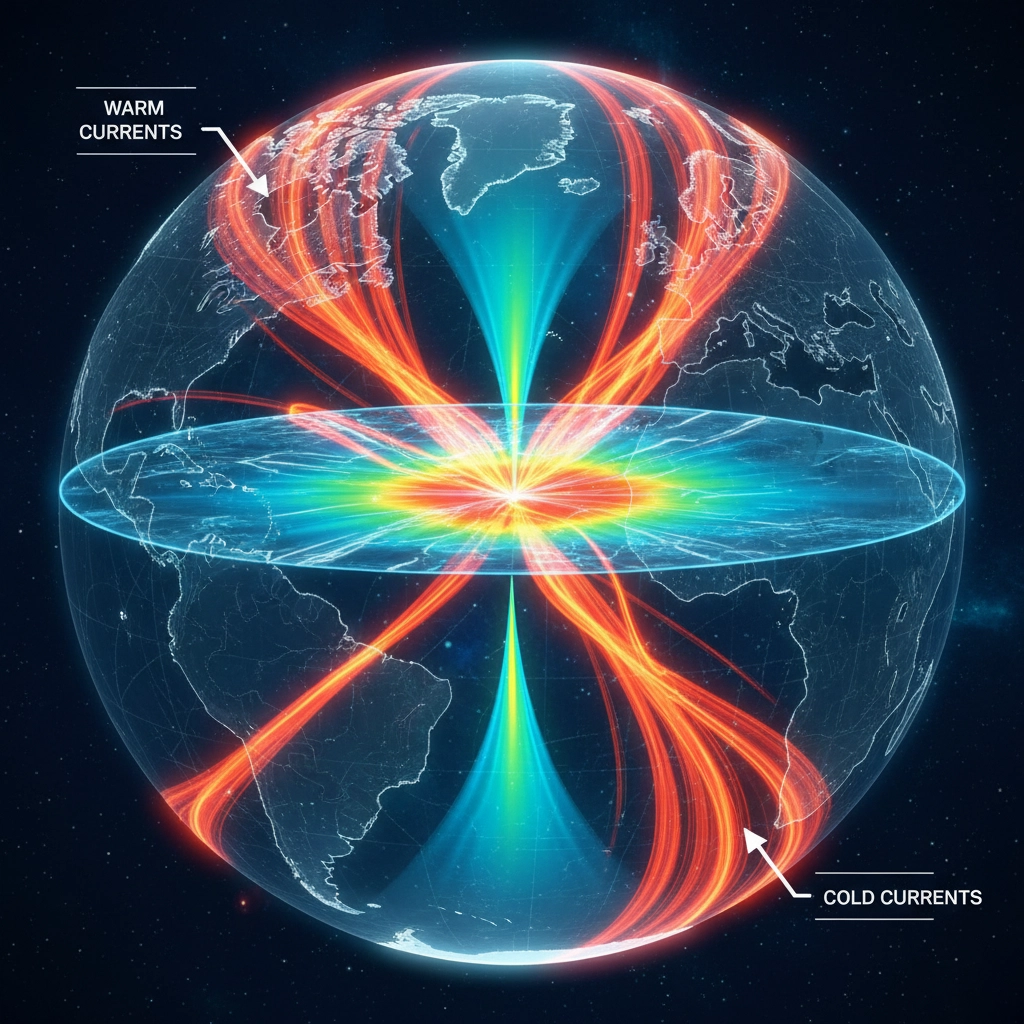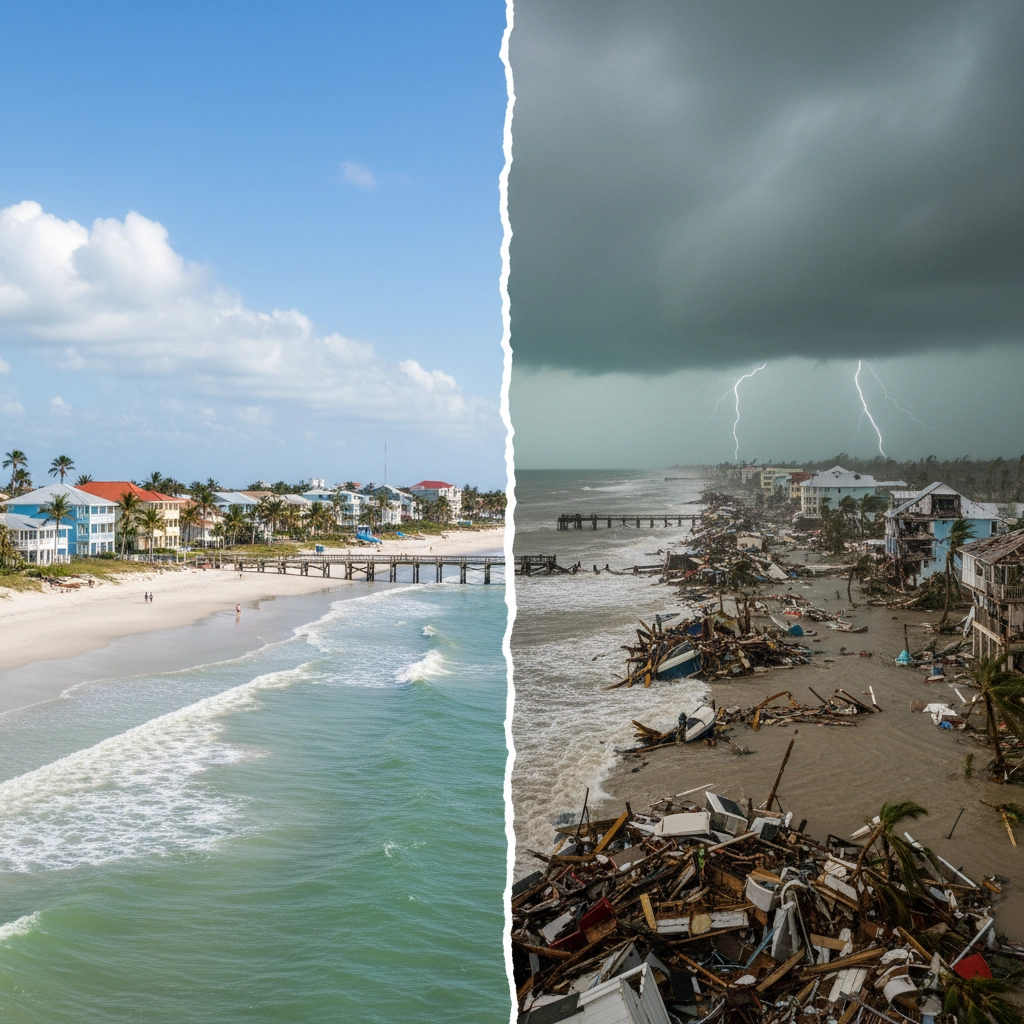Hurricane Melissa: How Melting Polar Caps Are Fueling Extreme Weather
- Randyb Dinwiddie
- Oct 31
- 5 min read
Hurricane Melissa's catastrophic path through the Caribbean in October 2025 serves as a stark reminder that our planet's weather systems are changing: and rapidly. With at least 46 confirmed deaths and billions in damages across Jamaica and Cuba, Melissa wasn't just another hurricane. It was a Category 5 monster that exemplified how melting polar ice caps are fundamentally altering the way storms develop, intensify, and destroy.
The connection between disappearing Arctic and Antarctic ice and Caribbean hurricanes might not seem obvious at first glance, but the science tells a clear story: as polar ice melts at unprecedented rates, it's creating a cascade of atmospheric and oceanic changes that are making storms like Melissa more frequent, more intense, and more unpredictable.
The Polar Meltdown: Setting the Stage for Chaos

The numbers are staggering. Arctic sea ice is disappearing at a rate of about 13% per decade, while the Greenland ice sheet loses approximately 280 billion tons of ice annually. The Antarctic ice sheet isn't far behind, shedding around 150 billion tons each year. But these aren't just statistics: they're the building blocks of our planet's changing weather patterns.
When polar ice melts, it doesn't just raise sea levels. It fundamentally disrupts the delicate balance of global air and ocean currents that have regulated Earth's climate for millennia. The Arctic, once a massive white reflector bouncing solar energy back into space, is now increasingly dark ocean water that absorbs heat instead. This creates what scientists call a "feedback loop": more melting leads to more heat absorption, which leads to even more melting.
This warming doesn't stay confined to the poles. It spreads through ocean currents and atmospheric patterns, eventually reaching tropical waters where hurricanes form. The result? Storms like Melissa that can explode from a Category 1 to a catastrophic Category 5 in less than 24 hours.
The Hurricane Highway: How Polar Changes Reach the Caribbean
The connection between polar ice loss and Caribbean hurricanes operates through several key mechanisms. First, melting polar ice adds massive amounts of fresh water to the oceans, which disrupts normal circulation patterns. The Gulf Stream, which carries warm water from the Caribbean northward, becomes less predictable and can pool more warm water in hurricane breeding grounds.
Second, the jet stream: the high-altitude river of air that typically keeps extreme weather contained in certain regions: becomes more erratic as polar regions warm. This "wobbly" jet stream allows tropical systems to intensify more rapidly and follow unusual paths, exactly what happened with Melissa's unexpected trajectory toward Jamaica and Cuba.

Perhaps most critically, the overall warming of ocean temperatures provides hurricanes with more fuel. Hurricane Melissa developed over Atlantic waters that were 2-3°C warmer than historical averages: temperatures that trace directly back to the excess heat trapped by melting ice and changing polar albedo (the ice's ability to reflect sunlight).
Melissa's Rapid Intensification: A Climate Change Signature
Hurricane Melissa's transformation from a 70 mph Category 1 storm to a 185 mph Category 5 monster in just 18 hours represents what meteorologists call "rapid intensification": a phenomenon that's becoming the new normal in our warming world. This isn't natural variability; it's a direct consequence of the energy imbalances created by polar ice loss.
The storm's peak intensity of 185 mph winds and a central pressure of 892 millibars tied it with the 1935 Labor Day Hurricane as the most intense Atlantic hurricane ever recorded at landfall. But unlike the 1935 storm, Melissa developed in an atmosphere fundamentally altered by decades of ice loss and global warming.
Climate scientists have identified the fingerprint of polar ice melt in Melissa's behavior: the storm maintained its intensity far longer than historical hurricanes, drew energy from deeper, warmer ocean layers, and followed atmospheric patterns consistent with a weakened polar vortex: all signatures of a climate system disrupted by ice loss.
The Business Reality: Preparing for a New Normal

For business owners, especially those in coastal areas or storm-prone regions, Hurricane Melissa represents more than a natural disaster: it's a wake-up call about the new economic reality of climate change. The preliminary damage estimate of $7.7 billion in Jamaica alone doesn't account for business interruption, supply chain disruptions, or the long-term economic impacts that ripple far beyond the storm's immediate path.
The insurance industry is already responding to this new reality. Property insurance rates in hurricane-prone areas have increased by 20-40% in recent years, with many insurers pulling out of high-risk markets entirely. This isn't just about coastal properties: the interconnected nature of modern business means that a storm like Melissa can disrupt operations hundreds of miles inland through supply chain interruptions and workforce displacement.
Smart business owners are recognizing that traditional disaster preparedness isn't enough anymore. The "100-year storm" is now happening every few years, and the intensity of these events is unprecedented. This means rethinking everything from building codes and backup power systems to supply chain diversity and business continuity planning.
Companies are also discovering opportunities in this challenging landscape. The demand for climate-resilient construction, renewable energy systems, and disaster recovery services is exploding. Businesses that position themselves as solutions to climate-related challenges are finding robust markets and strong growth potential.
The Acceleration Effect: Why Storms Are Getting Worse Faster

The relationship between polar ice melt and hurricane intensity isn't linear: it's accelerating. As more ice disappears, the effects compound. Computer models suggest that we're approaching several "tipping points" where relatively small amounts of additional warming could trigger rapid, irreversible changes in global weather patterns.
For hurricanes specifically, this means we're likely to see more storms like Melissa: rapid intensification, extreme wind speeds, and storm surges that exceed anything coastal communities were designed to handle. The warm ocean temperatures that fueled Melissa's growth aren't anomalies anymore: they're the new baseline.
The economic implications are staggering. The National Hurricane Center estimates that each additional mile per hour of wind speed increases damage potential exponentially. A Category 5 storm like Melissa doesn't cause just 25% more damage than a Category 4: it can cause 250% more damage due to the physics of wind pressure and storm surge.
Adaptation Strategies: Thriving in the Storm
While the science paints a challenging picture, it also provides a roadmap for adaptation. Understanding the connection between polar ice melt and extreme weather allows businesses and communities to prepare more effectively.
Infrastructure investments should prioritize flexibility and resilience over simple cost minimization. This means backup power systems, flood-resistant construction, and supply chains designed to withstand major disruptions. The initial cost is higher, but the long-term savings: in both money and peace of mind: are substantial.

Communication systems become critical when storms intensify rapidly. Businesses that invested in redundant communication systems and clear emergency protocols found they could maintain operations and protect employees even during Melissa's passage.
The insurance conversation is changing too. Rather than simply buying coverage and hoping for the best, savvy businesses are working with insurers to understand risk factors and implement mitigation strategies that can reduce premiums while improving protection.
Looking Forward: The New Weather Reality
Hurricane Melissa won't be the last storm of its magnitude. As polar ice continues to melt and ocean temperatures rise, we're entering an era where extreme weather events are not just more frequent but more intense and more unpredictable than anything in recorded history.
The connection between melting polar caps and devastating hurricanes represents one of the clearest examples of how local actions: in this case, global greenhouse gas emissions: create consequences that span the globe. Every ton of polar ice that melts contributes to the energy imbalances that turn ordinary tropical storms into catastrophic hurricanes.
For businesses, communities, and individuals, the message is clear: the weather patterns our parents and grandparents knew are gone. The new reality requires new thinking, new preparation, and new respect for the power of interconnected global systems.
Hurricane Melissa's legacy isn't just the destruction it left behind: it's the warning it provides about the future we're creating. By understanding the connections between polar ice melt and extreme weather, we can better prepare for the storms ahead and work toward solutions that address the root causes of our changing climate. The question isn't whether more storms like Melissa are coming: it's whether we'll be ready when they arrive.
















































Comments